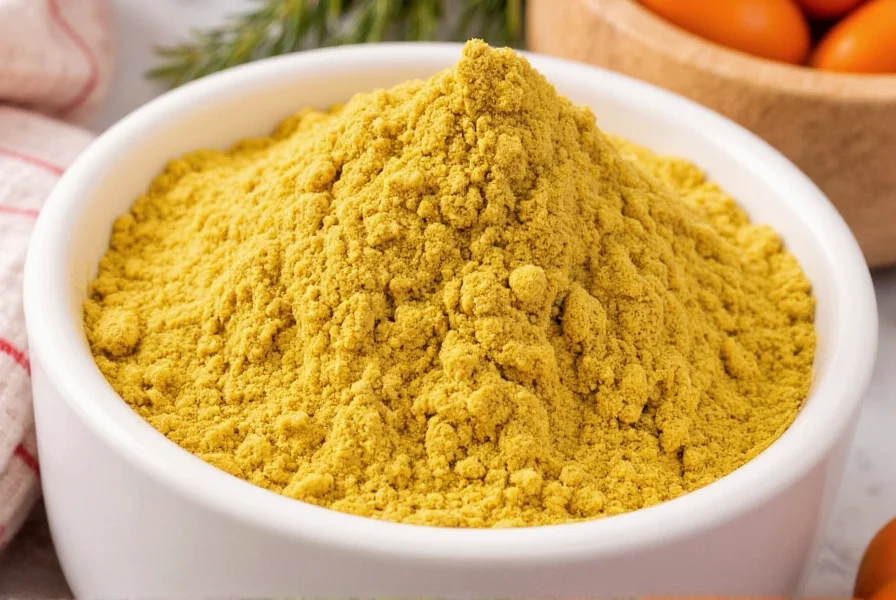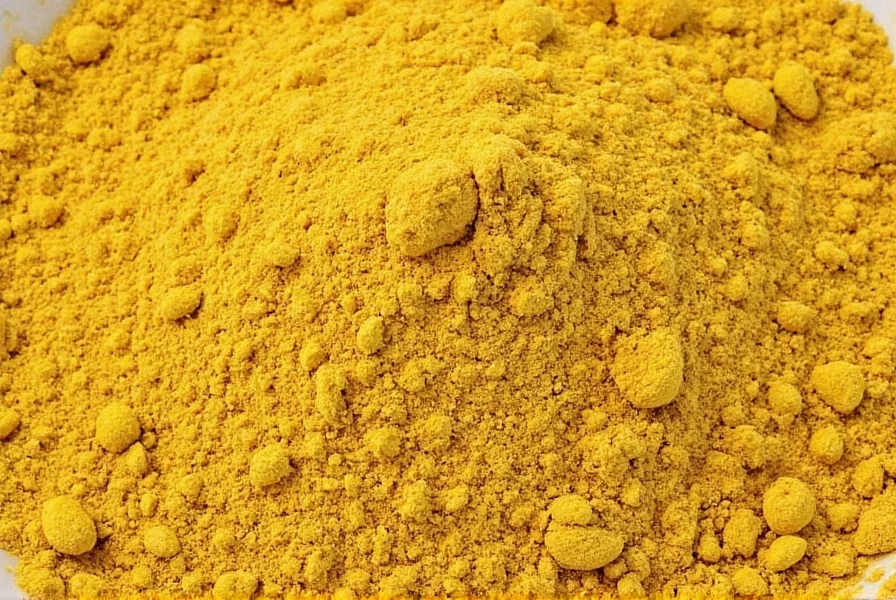Running out of mustard powder mid-recipe doesn't have to ruin your cooking plans. Whether you're making barbecue sauce, marinades, or salad dressings, several common pantry items can effectively replace dry mustard while maintaining the flavor complexity your dish requires. Understanding the right substitution ratios and flavor profiles ensures your culinary creations turn out perfectly every time.
Why You Might Need Mustard Powder Alternatives
Cooks seek mustard powder substitutes for various reasons. Some have dietary restrictions like mustard allergies, while others simply don't keep dry mustard in their pantry. Certain recipes might call for a different flavor profile while maintaining mustard's tangy characteristics. Understanding what gives mustard powder its distinctive flavor—tangy, slightly spicy, with earthy notes—helps identify suitable replacements that maintain your dish's integrity.
Top Mustard Powder Substitutes Explained
Prepared Yellow Mustard
Yellow mustard makes an excellent 3:1 substitute for mustard powder (3 tablespoons yellow mustard = 1 teaspoon mustard powder). The vinegar content provides similar tanginess, while the turmeric delivers comparable color. This substitution works particularly well in:
- Barbecue sauces
- Deviled eggs
- Salad dressings
- Meat glazes
Remember to reduce other liquids in your recipe by 1-2 teaspoons when using prepared mustard to maintain proper consistency.
Dijon Mustard
For recipes requiring more sophisticated flavor, Dijon mustard serves as an excellent alternative at a 1.5:1 ratio (1.5 tablespoons Dijon = 1 teaspoon mustard powder). Its sharper, more complex profile works beautifully in:
- Creamy sauces
- Marinades for poultry
- Vinaigrettes
- Beef stews
Dijon contains white wine vinegar rather than the distilled vinegar in yellow mustard, creating a more nuanced flavor that elevates sophisticated dishes.
Horseradish
When you need that distinctive mustard kick, horseradish provides similar heat at a 2:1 ratio (2 teaspoons horseradish = 1 teaspoon mustard powder). The sinus-clearing heat differs slightly from mustard's warmth but works well in:
- Cocktail sauces
- Roast beef accompaniments
- Seafood dishes
- Spicy mayonnaise blends
Combine horseradish with a touch of vinegar and turmeric to better approximate mustard's complete flavor profile.
Wasabi Paste
For Asian-inspired dishes, wasabi paste substitutes effectively at a 2:1 ratio (2 teaspoons wasabi = 1 teaspoon mustard powder). Its vibrant green color and distinctive heat work particularly well in:
- Sushi accompaniments
- Asian marinades
- Seafood sauces
- Vegetable dips
Wasabi's heat profile differs from mustard's, dissipating more quickly, so add it later in the cooking process for maximum impact.
Turmeric with Vinegar
For those with mustard allergies, a blend of turmeric and vinegar creates a safe alternative. Use 1/2 teaspoon turmeric plus 1 teaspoon vinegar for every teaspoon of mustard powder. This combination provides:
- Similar yellow color
- Mild earthy flavor
- Required acidity
This substitute works best in dishes where mustard flavor isn't the star but where color and mild tang matter, such as in potato salad or certain cheese spreads.
Special Considerations for Mustard Substitutions
When substituting for mustard powder, consider these important factors:
- Allergies: Those with mustard allergies should avoid all mustard varieties and horseradish (which belongs to the same plant family)
- Flavor intensity: Prepared mustards vary significantly in strength between brands
- Recipe timing: Add liquid substitutes later in cooking to preserve flavor
- Color impact: Turmeric-based substitutes will create a more vibrant yellow
- Salt content: Prepared mustards contain salt, so adjust seasoning accordingly
When Not to Substitute Mustard Powder
Certain recipes rely specifically on mustard powder's unique properties. Avoid substitutions in:
- Dry rubs where moisture would prevent proper adhesion
- Recipes specifically designed for mustard's particular flavor chemistry
- Commercial canning recipes where acidity levels are precisely calculated
- Gluten-free baking where mustard powder serves as a binder
| Substitute | Ratio (to 1 tsp mustard powder) | Best For | Flavor Difference |
|---|---|---|---|
| Yellow Mustard | 3 tbsp | Barbecue sauces, dressings | Milder, more vinegar-forward |
| Dijon Mustard | 1.5 tbsp | Creamy sauces, marinades | Sharper, more complex |
| Horseradish | 2 tsp | Cocktail sauces, roast beef | More intense heat, different profile |
| Wasabi Paste | 2 tsp | Asian dishes, seafood | Distinctive wasabi heat |
| Turmeric + Vinegar | 1/2 tsp + 1 tsp | Allergy-safe applications | Much milder, primarily color substitute |

Practical Application Tips
When implementing these substitutions in your cooking:
- For dry rubs: Create your own dry substitute by dehydrating prepared mustard on low heat until completely dry, then grinding to powder
- In salad dressings: Add liquid substitutes slowly while whisking to ensure proper emulsification
- For baking: Reduce other liquids by 1-2 teaspoons when using liquid substitutes
- When making cheese spreads: Let the substitute ingredients meld with cream cheese for at least 30 minutes before serving

Conclusion
Knowing effective alternatives to mustard powder expands your culinary flexibility without compromising recipe integrity. The right substitute depends on your specific cooking application, dietary needs, and flavor preferences. By understanding the substitution ratios and flavor profiles, you can confidently adapt any recipe requiring mustard powder. Remember that while substitutes can effectively replace mustard powder's function, each brings its own unique characteristics that may subtly alter your final dish—often for the better.
Frequently Asked Questions
Can I use whole grain mustard as a substitute for mustard powder?
Yes, whole grain mustard works as a substitute at a 2:1 ratio (2 tablespoons whole grain mustard = 1 teaspoon mustard powder). The visible mustard seeds provide texture similar to what dry mustard might contribute when not fully dissolved. This substitution works particularly well in hearty dishes like stews, sauerkraut, and robust salad dressings where the seed texture enhances rather than detracts from the dish.
What's the best mustard powder substitute for someone with a mustard allergy?
For those with mustard allergies, the safest alternative is a combination of turmeric (for color) and vinegar or lemon juice (for acidity) at a ratio of 1/2 teaspoon turmeric plus 1 teaspoon vinegar per teaspoon of mustard powder. Avoid horseradish and wasabi as they belong to the same plant family as mustard and may trigger similar allergic reactions in sensitive individuals.
How do I substitute mustard powder in a dry rub?
For dry rubs, create a homemade mustard powder substitute by spreading prepared mustard thinly on parchment paper and dehydrating at 170°F (77°C) for 6-8 hours until completely dry, then grinding to a fine powder. Alternatively, use a 2:1 ratio of turmeric to paprika with a pinch of cayenne for heat, though this won't replicate mustard's distinctive flavor, it will provide similar color and mild complexity.
Can I use mustard seeds instead of mustard powder?
Yes, but with preparation. Use 1.5 teaspoons of mustard seeds for every teaspoon of mustard powder, but you must first grind them into a fine powder using a spice grinder or mortar and pestle. For immediate use in wet recipes, you can soak the seeds in hot water or vinegar for 10-15 minutes to soften them before adding to your recipe, which creates a closer approximation to prepared mustard powder.
What's the difference between using mustard powder and prepared mustard in recipes?
Mustard powder provides concentrated flavor without added moisture, making it ideal for dry rubs and recipes where liquid content matters. Prepared mustard adds both flavor and liquid, so you'll need to adjust other liquids in your recipe. Mustard powder also has a more intense, pure mustard flavor since it lacks the vinegar and other ingredients found in prepared mustards. The choice affects both texture and flavor profile of the final dish.











 浙公网安备
33010002000092号
浙公网安备
33010002000092号 浙B2-20120091-4
浙B2-20120091-4